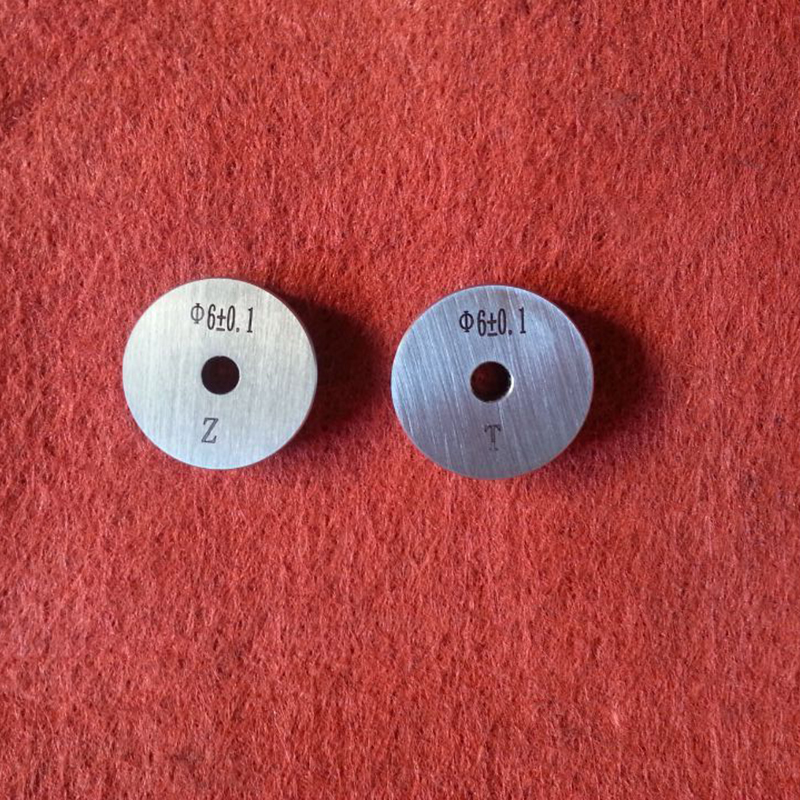Oct . 06, 2024 05:19 Back to list
ring and plug thread gages
Understanding Ring and Plug Thread Gages Essential Tools for Precision Engineering
In the realm of precision engineering and manufacturing, ensuring that threaded components fit together seamlessly is essential. Whether in the automotive, aerospace, or machinery industries, the integrity of threaded connections is critical for safety and performance. This is where ring and plug thread gages come into play. These simple yet effective measuring tools are pivotal in assessing the quality of threaded parts, ensuring they meet the required specifications.
What are Thread Gages?
Thread gages are precision instruments designed to measure the dimensions of threads on bolts, screws, and other fasteners. They come in two main types ring gages and plug gages, each serving a distinct purpose in the quality control process.
Ring Gages are used to check the external threads of a component. These gages resemble a ring with internal threads that match the specifications of the desired thread profile. When a bolt or screw is inserted into the gage, it allows engineers to determine whether the external threads are within tolerances and fit correctly. There are two types of ring gages—go and no-go. The go gage must fit the thread perfectly, indicating it is within specification, while the no-go gage must not fit; if it does, the thread is deemed out of specification.
Plug Gages, on the other hand, are designed for internal threads. These gages come in a cylindrical shape with external threads and are used to measure the internal threading of holes. Similar to ring gages, plug gages are also categorized into go and no-go types. The go plug should fit without resistance, while the no-go plug should not fit at all.
Importance of Accurate Thread Measurement
ring and plug thread gages

Accurate thread measurement is crucial for multiple reasons. First, it ensures that components can be assembled without issues and function as intended. Misaligned or poorly fitting threads can lead to mechanical failure, which can have catastrophic results, especially in high-stakes industries like aerospace and automotive.
Moreover, using thread gages helps maintain high-quality standards in manufacturing. Consistent measurements indicate that production processes are under control, which boosts confidence among engineers and clients. Regularly checking threads during the manufacturing process also helps identify any deviations from specifications early on, allowing manufacturers to address issues before they escalate.
Industry Standards and Specifications
Thread gages are subject to various industry standards, including those set by the American National Standards Institute (ANSI), the International Organization for Standardization (ISO), and the American Society of Mechanical Engineers (ASME). These standards provide guidelines on thread form, pitch diameter, and tolerances that ensure consistency across different manufacturers and applications.
Using gages that meet these standards is not only a best practice but often a regulatory requirement. Compliance with recognized standards contributes to product reliability and safety, allowing businesses to avoid costly recalls and maintain a strong reputation in the marketplace.
Conclusion
In summary, ring and plug thread gages are indispensable tools in the field of precision engineering. Their ability to accurately measure and verify the integrity of threaded components ensures that machines operate safely and efficiently. Manufacturers who invest in high-quality gages and adhere to industry standards set themselves apart in terms of reliability and quality assurance. By incorporating these essential tools into their quality control processes, companies can achieve optimal performance and build a solid foundation of trust with their clients and stakeholders, ultimately contributing to long-term success in a competitive landscape.
-
Why Metric Trapezoidal Thread is Ideal for Precision Motion ControlNewsAug.05,2025
-
The Unique Properties of a Block of Granite for Industrial UseNewsAug.05,2025
-
The Role of Flanged Y Strainers in Preventing Pipeline ClogsNewsAug.05,2025
-
The Importance of Regular Calibration for Master Ring GagesNewsAug.05,2025
-
How a Cast Iron Surface Table Enhances Accuracy in ManufacturingNewsAug.05,2025
-
Comparing Different Check Valve Types for Optimal Flow ControlNewsAug.05,2025
Related PRODUCTS









